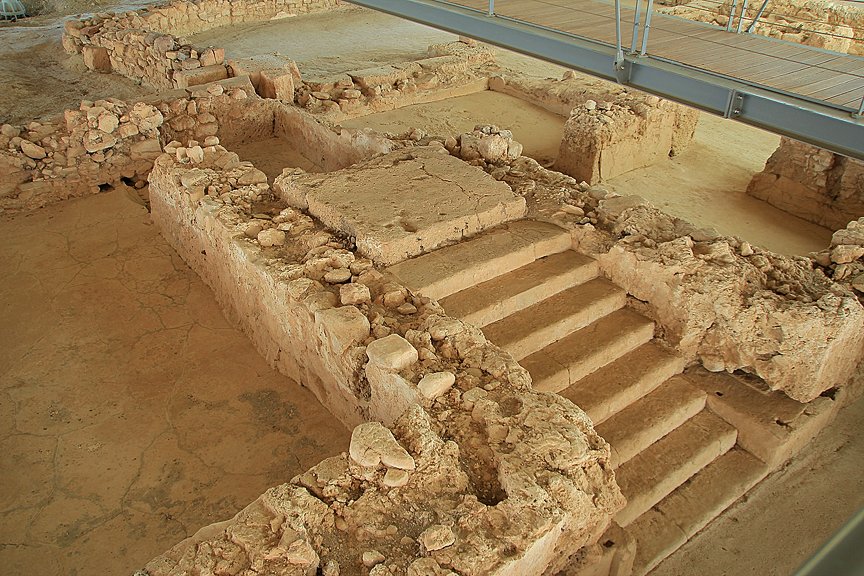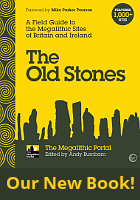<< Our Photo Pages >> Mycenaean Palace of Nestor - Ancient Palace in Greece in Peloponnese Peninsula
Submitted by AlexHunger on Wednesday, 08 November 2017 Page Views: 14026
DigsSite Name: Mycenaean Palace of Nestor Alternative Name: Pylos, Anaktora Nestoros, Ανάκτορο του ΝέστοραCountry: Greece Region: Peloponnese Peninsula Type: Ancient Palace
Nearest Town: Kalamata Nearest Village: Khóra
Latitude: 37.027189N Longitude: 21.695007E
Condition:
| 5 | Perfect |
| 4 | Almost Perfect |
| 3 | Reasonable but with some damage |
| 2 | Ruined but still recognisable as an ancient site |
| 1 | Pretty much destroyed, possibly visible as crop marks |
| 0 | No data. |
| -1 | Completely destroyed |
| 5 | Superb |
| 4 | Good |
| 3 | Ordinary |
| 2 | Not Good |
| 1 | Awful |
| 0 | No data. |
| 5 | Can be driven to, probably with disabled access |
| 4 | Short walk on a footpath |
| 3 | Requiring a bit more of a walk |
| 2 | A long walk |
| 1 | In the middle of nowhere, a nightmare to find |
| 0 | No data. |
| 5 | co-ordinates taken by GPS or official recorded co-ordinates |
| 4 | co-ordinates scaled from a detailed map |
| 3 | co-ordinates scaled from a bad map |
| 2 | co-ordinates of the nearest village |
| 1 | co-ordinates of the nearest town |
| 0 | no data |
Internal Links:
External Links:
I have visited· I would like to visit
rrmoser would like to visit
Klingon visited on 28th Jun 2017 - their rating: Cond: 3 Amb: 4 Access: 4
43559959 visited on 10th May 2009 - their rating: Cond: 2 Amb: 2 Access: 4
Bjorn davidmorgan have visited here
Average ratings for this site from all visit loggers: Condition: 2.5 Ambience: 3 Access: 4

Note: Archaeologists unearth 'masterpiece' sealstone just 1.4 inches (35mm) across in Greek 'tomb of the Griffin Warrior' - see the comments on our page for more
You may be viewing yesterday's version of this page. To see the most up to date information please register for a free account.




Do not use the above information on other web sites or publications without permission of the contributor.
Nearby Images from Flickr






The above images may not be of the site on this page, but were taken nearby. They are loaded from Flickr so please click on them for image credits.
Click here to see more info for this site
Nearby sites
Click here to view sites on an interactive map of the areaKey: Red: member's photo, Blue: 3rd party photo, Yellow: other image, Green: no photo - please go there and take one, Grey: site destroyed
Download sites to:
KML (Google Earth)
GPX (GPS waypoints)
CSV (Garmin/Navman)
CSV (Excel)
To unlock full downloads you need to sign up as a Contributory Member. Otherwise downloads are limited to 50 sites.
Turn off the page maps and other distractions
Nearby sites listing. In the following links * = Image available
186m NE 41° Nestors Palace Tholos Tomb* Passage Grave
929m SW 229° Mycenaean Tholos Tomb near Nestors Palace* Passage Grave
3.7km SSE 158° Iklaina* Ancient Village or Settlement
3.7km NE 38° Archaeological Museum of Chora* Museum
4.0km SSW 202° Korifasiou* Passage Grave
4.1km SW 225° Viglitsa* Chambered Tomb
7.5km SSW 204° Thrasymedes tomb* Passage Grave
12.8km S 181° Neokastro* Museum
19.5km E 98° Nichoria* Ancient Village or Settlement
20.5km S 176° Saint Onoufrios catacombs* Cave or Rock Shelter
22.2km ESE 110° Petalidi* Ancient Temple
25.9km NE 50° Ancient Messene* Ancient Village or Settlement
26.3km NE 47° Arkadian Gate* Hillfort
26.4km SSE 149° Kaplani Tomb Passage Grave
26.7km NE 50° Eileithyia* Ancient Temple
26.8km NE 51° Artemis Limnatis* Ancient Temple
26.9km SE 132° Sanctuary of Apollo Korythos* Ancient Temple
27.0km NE 49° Sanctuary of Zeus Ithomatas Ancient Temple
27.2km NE 52° Lakonian Gate* Hillfort
28.0km N 8° Peristeria* Passage Grave
30.9km NNE 31° Malthi* Chambered Tomb
35.1km SE 137° Apollo Temple of Koroni* Ancient Temple
45.9km N 3° Lepreon* Ancient Temple
48.3km NNE 22° Bassae Temple of Apollo* Ancient Temple
50.1km NE 36° Lykosoura Despoina Sanctuary* Ancient Temple
View more nearby sites and additional images





 We would like to know more about this location. Please feel free to add a brief description and any relevant information in your own language.
We would like to know more about this location. Please feel free to add a brief description and any relevant information in your own language. Wir möchten mehr über diese Stätte erfahren. Bitte zögern Sie nicht, eine kurze Beschreibung und relevante Informationen in Deutsch hinzuzufügen.
Wir möchten mehr über diese Stätte erfahren. Bitte zögern Sie nicht, eine kurze Beschreibung und relevante Informationen in Deutsch hinzuzufügen. Nous aimerions en savoir encore un peu sur les lieux. S'il vous plaît n'hesitez pas à ajouter une courte description et tous les renseignements pertinents dans votre propre langue.
Nous aimerions en savoir encore un peu sur les lieux. S'il vous plaît n'hesitez pas à ajouter une courte description et tous les renseignements pertinents dans votre propre langue. Quisieramos informarnos un poco más de las lugares. No dude en añadir una breve descripción y otros datos relevantes en su propio idioma.
Quisieramos informarnos un poco más de las lugares. No dude en añadir una breve descripción y otros datos relevantes en su propio idioma.